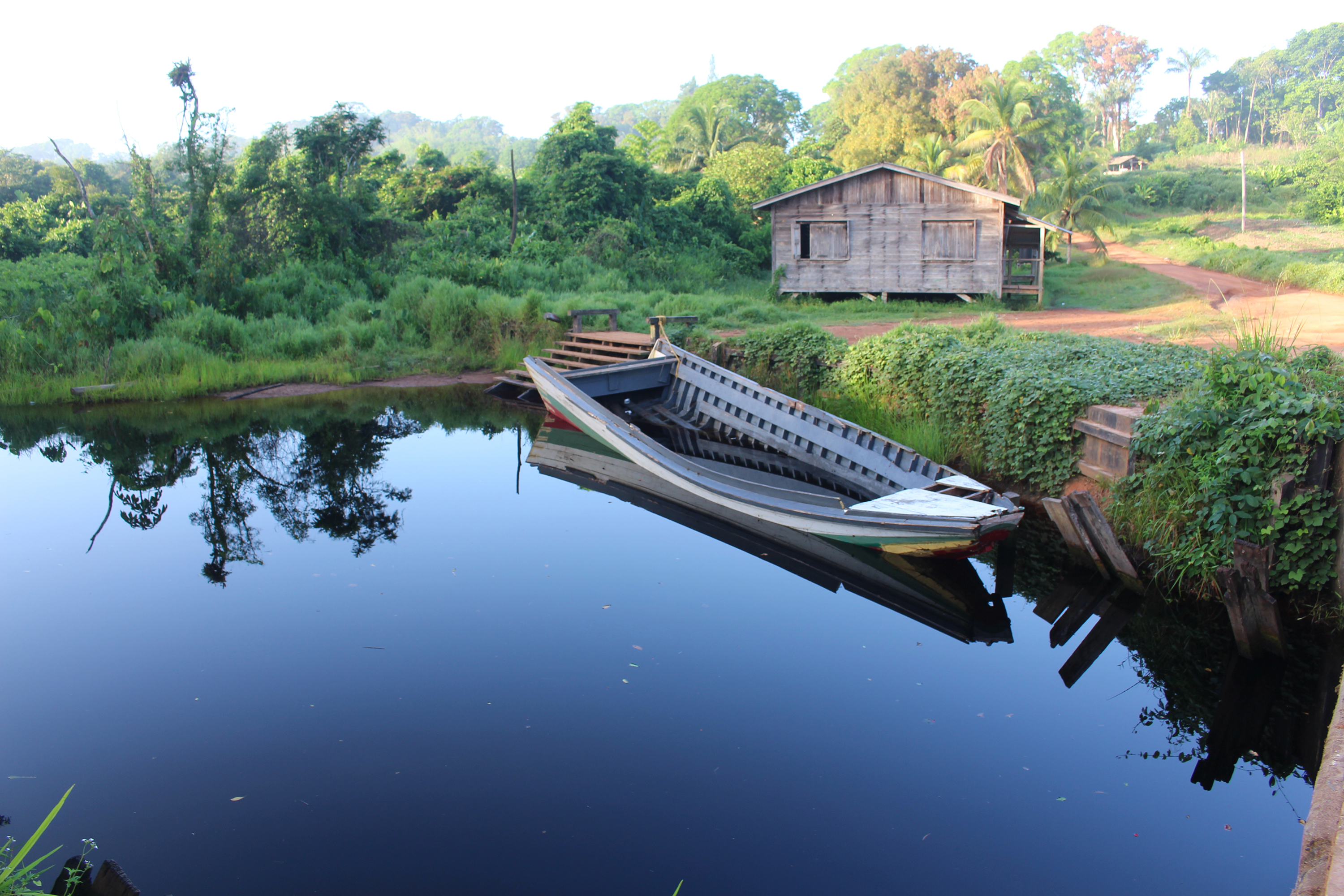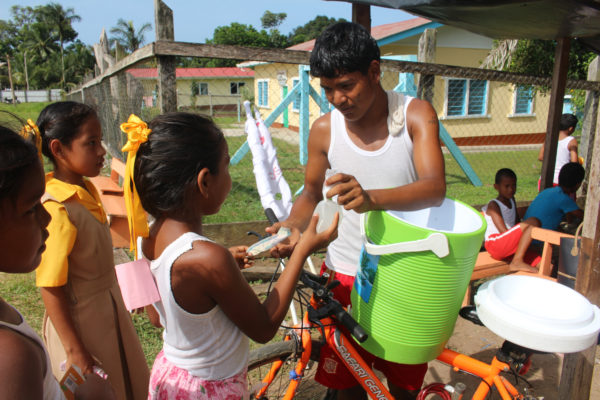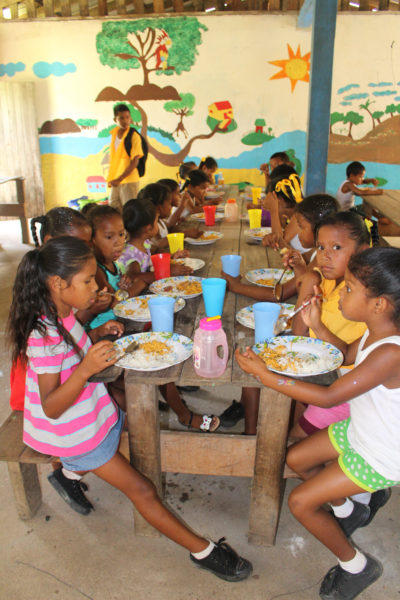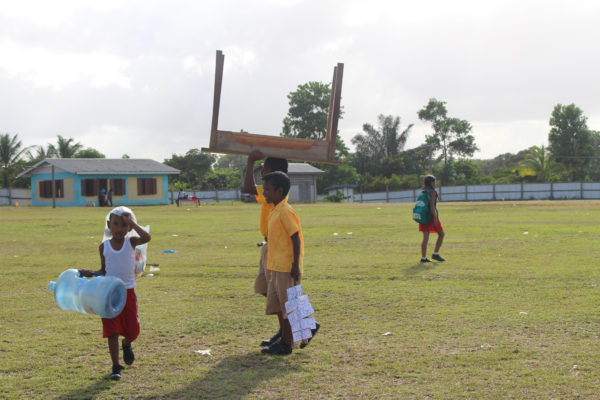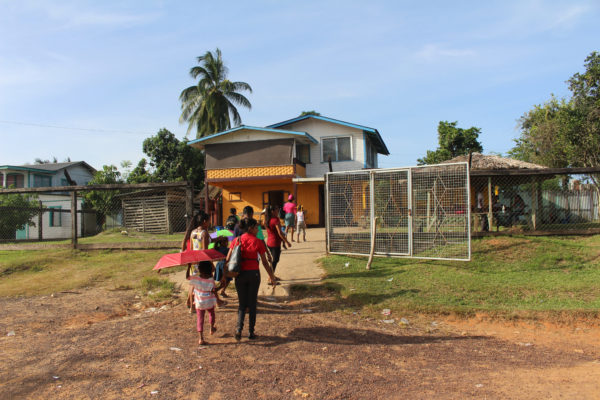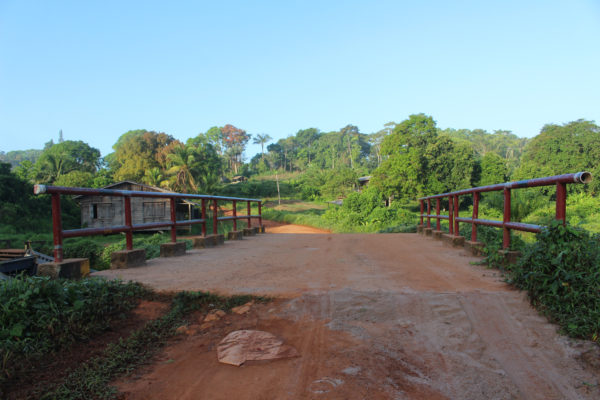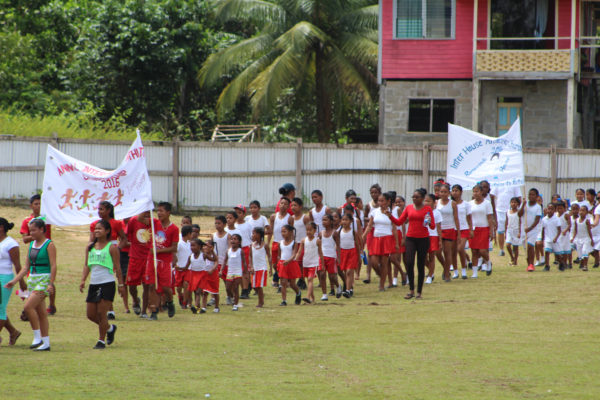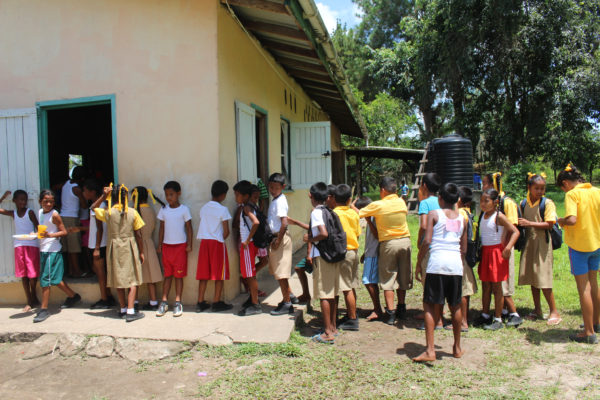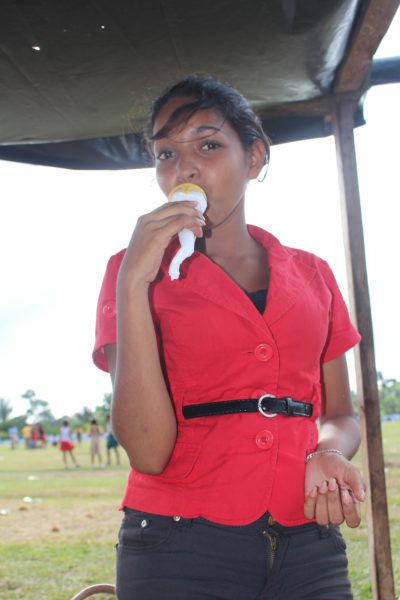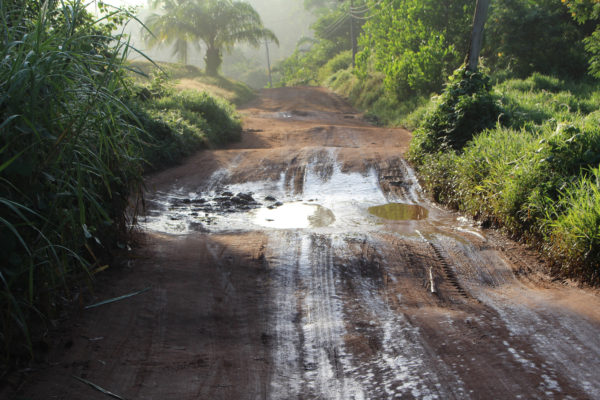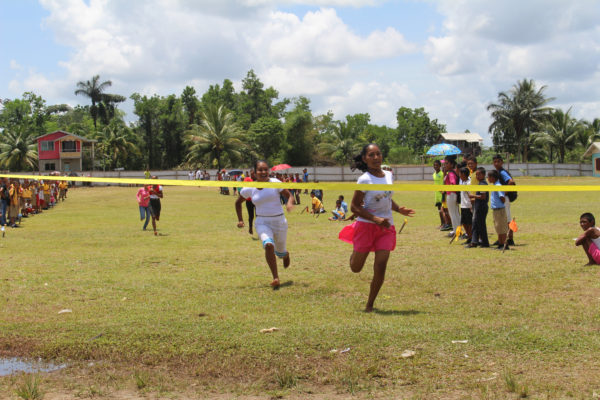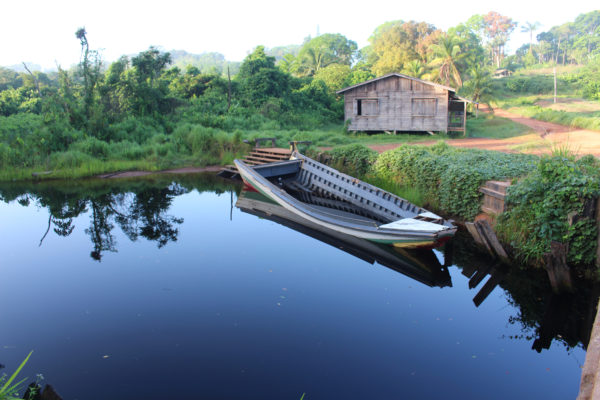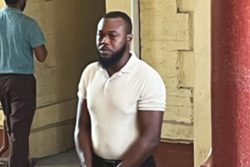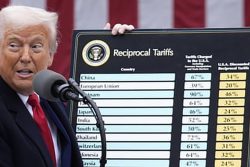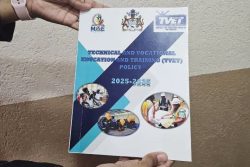Story and photos by Joanna Dhanraj
Wauna is a tiny village in the North West District, home to just a couple hundred people. It is one of the most serene villages you will find anywhere in Guyana, with perfect secluded spots among pretty and wild ferns and trees, where alluring cold black water creeks invite you to take a dip.
The close to one hour drive from the Mabaruma Airport or 45-minute drive from the Kumaka Boat Stelling takes one across the ubiquitous red-brick road. In this area it is called the Wauna Stretch, though one really doesn’t get into Wauna at the end of the stretch. One must cross the Wauna Bridge sitting over the Wauna Creek, two of the first tourist attractions.
A little way from the bridge there is a hill on which houses play hide and seek among the trees. At the top of the hill there are schools, shops and other houses.
On the day the World Beyond Georgetown visited, most of the villagers were gathered at the community centre ground for the area’s inter-school sports.
Shortly after arriving the various school houses did their march-past before the opening of the sports. With not many children attending the White Water and Kamwatta schools a few miles away, they were each allotted ‘a house’ for the sports. Not much goes on in Wauna, so an event such as an inter-house sports attracts almost the entire village and a few visitors from the other villages as well.
In attendance was Village Leader and Community Development Councillor Kamla Armogan.
She was born at Enmore on the East Coast Demerara and moved to Hosororo when she was ten years old. Her mother, originally from Hosororo, had returned in search of work. Her mother worked at the Wauna Oil Palm Plantation later known as the National Edible Oil Company Limited (NEOCOL) and today called Agri Solution Technology (AST).
Armogan attended North West Secondary in Mabaruma and walked six miles every day from Hosororo to school and another six back. A year later, she and her parents moved to Wauna. The miles to school had now increased from 12 to 26 per day and so she dropped out of school. However years later, she ended up walking it fetching her baby on her hip to clinic every month.
She too worked at NEOCOL for five years and another three with AST, weeding between the palms with a cutlass and picking up the seeds. Later, she found work as a mechanic and then as a store clerk.
These days, the councillor is a wife and mother of three girls: one of whom teaches at Wauna Primary, while another is Headmistress of Wauna Nursery. Armogan is also grandmother to a year old grandson who lives in Georgetown with her eldest daughter.
“Most persons here work in the interior, some are health workers, teachers, shopkeepers, brush-cutter weeders or self-employed some other way,” she said.
“It is a peaceful atmosphere here; crime free. The air is clean and fresh to breathe. People are friendly and kind; if you don’t have something to cook, you can always go by the neighbour. The youths here are really sports-minded; they love their games. You would find them on the field every day.”
As we spoke, a young man from the village rode up on his bicycle. He was selling coconut water in plastic bags and homemade ice-cream comes. It was a hot day and persons flocked to buy the coconut water.
Concerning disadvantages Armogan said there were issues with the road and as regards transportation. And in addition, the prices for groceries are very high. “The land is not producing like before. You have to use a lot of fertilizers which you don’t presently get; so scarcely any vegetables. Unemployment is number one when it comes to disadvantages. For electricity we fund it mostly ourselves although the region gives us a drum or two of fuel every month; we use three drums a month. We get lights from 6.30 pm to 9 pm. We’d be happy if we could get electricity for longer periods especially for our children,” she said.
“We need 24 hours [potable] water and electricity, a doctor for our village and better roads. We usually get water for two hours every two days.”
In addition, Armogan said, “As the leader my job entails seeing development and representing the people of Wauna. I meet with the council and the community every two to three months. The village has four churches; I’m a Seventh-day Adventist. Most of the villagers go to the Full Gospel Church.”
Wauna has a school feeding programme, which provides lunch for the children every day. Children attending the school come from miles around.
Sixty-six-year-old Enid George was originally from Barima. She and her husband, who was from Morawhanna, moved to Wauna when she was 24 years old.
However, she said that Wauna didn’t exist until after she and her family and other families moved to the location the 1960s. They had met a few persons living there, but the settlement was not considered a village until the sixties.
George therefore saw the beginning of Wauna and how it thrived.
The government then was giving families wishing to live there, 25 acres or 50 acres, she said, with the 25 acres being given to persons who wanted to plant and the 50 acres to those who wanted to rear farm animals. She said most persons took the 25 acres.
Along with the Georges, the Saywacks, Seecharrans, Walkins, Waddles, Harrys, Kanhais, Sookdeos and Mentores took up the 25 acres. The Dhanrajs were the first in the 50 acres.
“It was better here. When we come up here is hills but in Barima was sheer water. When rain fall there it kill out the plants. We used to plant eddo, yam, sweet potato, sweet and bitter cassava. When we came here we planted saeme, ground provision, dasheen and corn. We used to carry out we produce with tractor to Kumaka Market on Tuesdays; boat used to come on Tuesdays,” she recalled.
Sometime in the 60s, George said, government opened the oil palm factory referred to by Armogan. The palms came from farms around Wauna and were taken to the factory for grinding. “A train-like vehicle,” she recalled, transported workers from Mabaruma, Hosororo and other villages around including those from riverain areas to the factory.
“Wauna was a nice, nice place. People used to work and get work. More people lived here then. Now Wauna is not Wauna no more. Wauna gone down, all the real farmers die out,” she lamented. “When we used to plant government had a big bond; you could have carry your produce and sell to government. Now you have nowhere to take your produce to sell.”
The only school at that time was St Teresa’s, a Catholic school. It was situated at a convenient spot for children coming from other villages, but later relocated to where the current schools are is now Wauna Primary Top.
George said, “I’d like to see the road build good and I’d like to see the farmers start back their farming.”
A young teacher of Wauna Primary Top, Travis Chu said, “The people of Wauna are friendly; they’re helpful. Whenever persons come to Wauna to live, they gave them a warm welcome.”
The road in Wauna is also a main access to White Water, Black Water, Yarakita and Kamwatta, Chu shared.
He said too that the bridge and the creek are tourist attractions. On weekends, residents of other villages visit the creek to relax.
The Wauna Creek flows into another called Akawabi Creek, which is only accessible by boat and persons usually fish there. However as proud as Chu is, he is also disappointed as he believes that if the bridge and the creek were better developed Wauna could attach a fee for visitors and use the revenue to help to boost the creek and its surroundings.
“People come from all over and hang out and when they leave, they leave it [littered] and we have to find ways and means of getting it clean,” he stated.
The unemployment rate, he added, is high and is a big disadvantage. “Many of the persons my age are forced to work in the gold mines because of lack of jobs. They spend three of four months and when they come out; they haven’t much for themselves with gold price being so low.”
Children were standing in line for their lunch, so Chu was asked whether the intermittent electricity affected the kitchen. He noted that meat and fish were supplied to the school daily so there was no need to refrigerate. The school’s kitchen, he said, has no solar panel and so with the Christmas party being held last week they had to ask the Learning Resource Centre, which has solar panels and is situated in the same compound, to keep some of the meat for the party. A resident who has a generator also assisted and the school provided the fuel for the generator. He said the school was is in dire need of its own solar panels and generator.
Chu said the road needs repairing and being a sportsman he sees the need for better facilities for persons wishing to play basketball and tennis, more seating arrangements for spectators viewing big games and better lighting to have night games. The ground he said is occupied every afternoon with persons playing cricket, volleyball and/or football.
